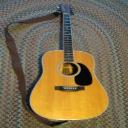Yahoo Answers is shutting down on May 4th, 2021 (Eastern Time) and beginning April 20th, 2021 (Eastern Time) the Yahoo Answers website will be in read-only mode. There will be no changes to other Yahoo properties or services, or your Yahoo account. You can find more information about the Yahoo Answers shutdown and how to download your data on this help page.
Trending News
When running a generator through your Fuse Box you need both a Inlet box & switch box?
in all the Youtube videos they just show how to install a inlet box. or how do inlet boxes work, what happens when the power comes back on when your running your generator through an inlet box
9 Answers
- USAFisnumber1Lv 73 years agoFavorite Answer
You need a switch to shut off the main power line while you are running on the generator. If you do not, then you got two issues. First, you are putting juice from your generator back into the power line from the direction of your house. This could cause the electrocution of a lineman who is fixing the line. He will think the power is off as he threw the switch between him and the power plant and not know that you are feeding juice in from your side. You would be totally responsible for his death and would get sued big time. Secondly, once the power comes back on it will be out of phase with your generator. You could end up burning out ever electric motor in your house. (Ceiling fans, motors in the fridge and freezer, furnace/AC fan, etc.) Besides the cost of damages you could set a fire as they burned out. You need a switch.
- dtstellwagenLv 73 years ago
Short answer, nothing happens when the utility power comes back on until a switch is operated (manually or automatically) to change back from portable to utility power. You need an inlet to connect the power and a switch to select and isolate source.
Long answer, the switch is called a "transfer switch", it selects power source your panel can draw from. The cheapest simple safe legal way if you have a modern panel is a breaker interlock switch like this one https://amzn.to/2suso2b . (Each brand of panel needs a switch designed to fit that panel.) It simply connects the inlet to a breaker closest to the existing main breaker and uses a bracket to prevent them both being on at the same time. If the existing main breaker is off there is no danger of electrocuting a lineworker. This switch needs to me operated manually when the power is restored by the utility. I have never seen one of these rejected by a local inspector when properly installed. Most of the inspection issues are usually due to existing issues.
There are also "automatic transfer switch" options, which sense power loss and automatically start the generator and switch on and off as needed. But then you are talking about a big price difference, an interlock bracket can cost as little as $125 in materials and 4 hours work, where a fully automatic transfer switch will be at least $600 in material, you will need an electric start generator with battery charger and at least 8 hours labor.
- TommymcLv 73 years ago
There are many ways to hook up a portable generator. They boil down to two categories: legal and woodchuck. The short answer is that to be safe and legal, you should use both an inlet box and transfer switch.
At it's most basic, you need:
1. A way to "backfeed" the power from the generator. This can be through the electric dryer hookup using a "suicide cable" or using a generator inlet box. The reason that it's unsafe to use a dryer hookup is that you need a cable (or an adapter) with a male end coming from the generator. If you are handling this while the generator is on, there is a chance of accidental electrocution. An inlet box is not only safer, but you can mount it in a convenient location to where you'll be running the generator.
2. A way to prevent the generator from feeding power back into the main power grid. This is for the safety of the utility workers as well as to avoid overloading the generator. The woodchuck solution is to make sure you turn off the main power switch at your breaker box before hooking up the generator. The legal way is to use a TRANSFER SWITCH or SAFETY INTERLOCK. A "safety interlock" is a mechanical device that mounts to your breaker box and prevents the generator breaker and the main from being switched on at the same time. For this to work, the generator breaker must be in the #1 location in your breaker box.
3. You need a way to control which circuits the generator is supplying power to. You can either do this manually by flipping breakers, or have the power go to pre-selected circuits in a transfer switch. Remember: your generator probably has a 30 amp output (compared to 100 or 200 amps for the house) so you can't run everything at once.
When I hooked up my generator, I opted for a inlet box and safety interlock. It's the least expensive of the legal and safe options. There *is* some debate about the legality of interlocks, so check with your local utility. The other advantage of an interlock over a transfer switch is versatility. While I must be mindful of the overall load, I can run power to any circuit....although not all at once. One disadvantage is that I don't automatically know when the power has been restored. I have to keep going outside and looking at my meter to see if the digital display is back. With a transfer switch, you can leave a light on for one of the circuits not hooked through the switch. When you see the light come on, you know power has been restored.
Bottom line: you don't absolutely need a transfer switch, but it's the safest, legal, dummy-proof way to go.
- Spock (rhp)Lv 73 years ago
READ instructions for the generator! FOLLOW them.
you have to turn power company feed off at the main breakers BEFORE connecting generator. AND then, STOP the generator and disconnect before turning the power company back on.
If you don't have a main breaker set -- best to have a bypass switch installed for the generator -- this goes in the feed from the meter to the breaker box and physically disconnects the power company feed before it will connect the generator feed.
Source(s): grampa - How do you think about the answers? You can sign in to vote the answer.
- yLv 73 years ago
I am not sure what you are calling an inlet box, hell i have seen YouTube videos where they are connecting through the dryer plug(just the wrong way) However you end up connecting, you must have some sort of interlock, that prevents the main and the generator feeding the box at the same time. Some panels have systems that you can do that in, not all do though. Some local bylaws like in my town don't allow a generator without a transfer switch and such and permit.
- Anonymous3 years ago
I use an inlet box to connect my generator to the main panel but I have a lock-out device installed on the panel so it can only be powered by either the main or the generator
- STEVEN FLv 73 years ago
It depends on if the TRANSFER SWITCH, which you incorrectly call an inlet box, is manual or automatic. The switch ISOLATES the generator from utility power, to prevent electrocuting repair crews.
An automatic transfer switch will return to line power with no action on your part.
A manual transfer switch requires you to manually switch back.
- Anonymous3 years ago
You call an electrician.
- SnezzyLv 73 years ago
Your generator must ABSOLUTELY be wired so that there is no connection to the power mains from the power company, only to your house. You must understand how it all works and not base any of your actions on guesswork or info from Internet buddies.
If you wire it wrong so that your power goes back towards the generation and distribution facilities you could electrocute the repair staff.
Learn how to do it correctly, or leave it entirely to the professionals.






